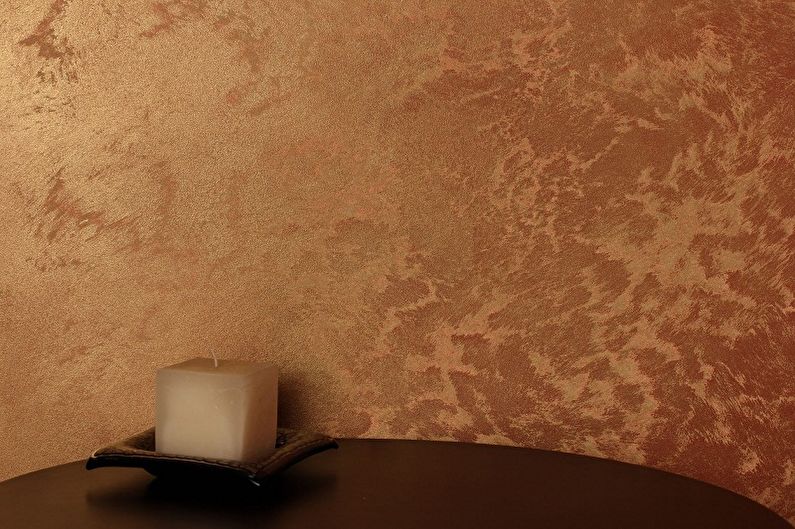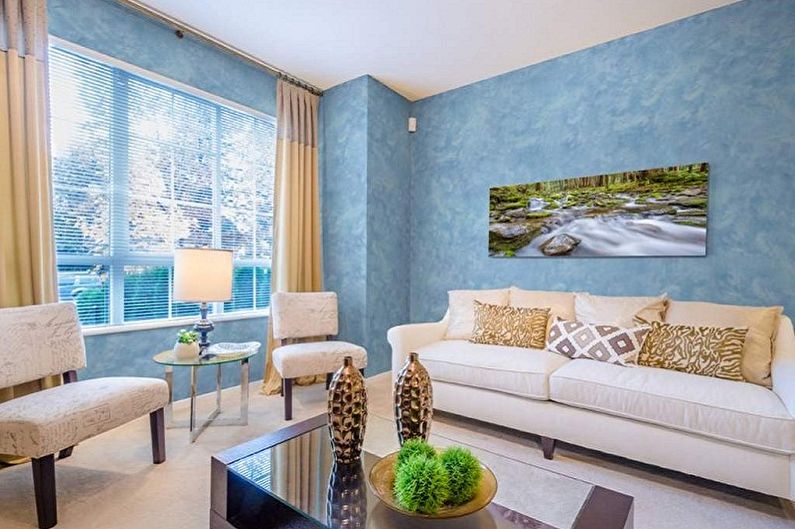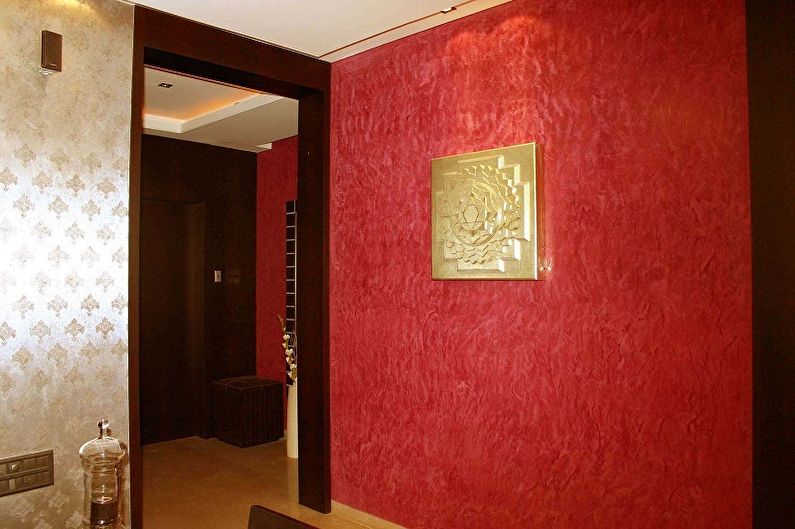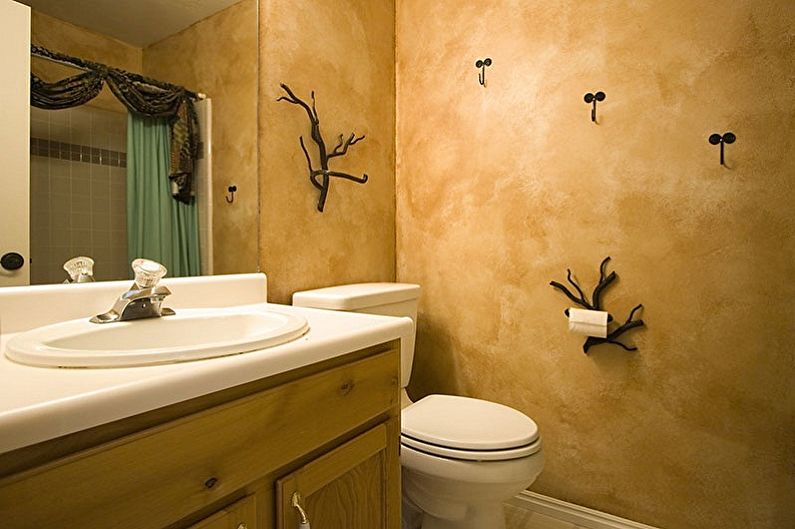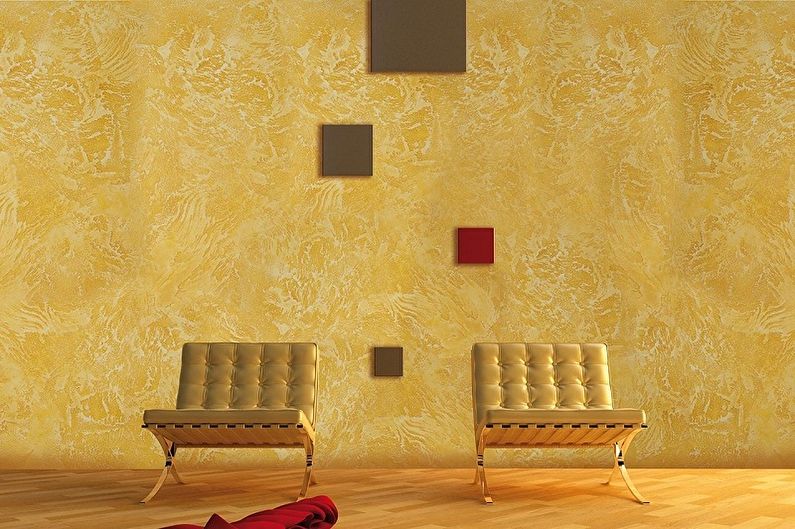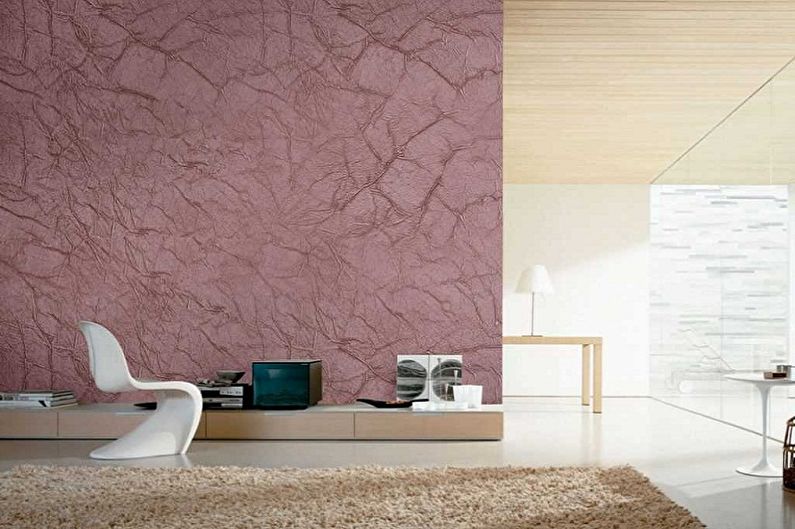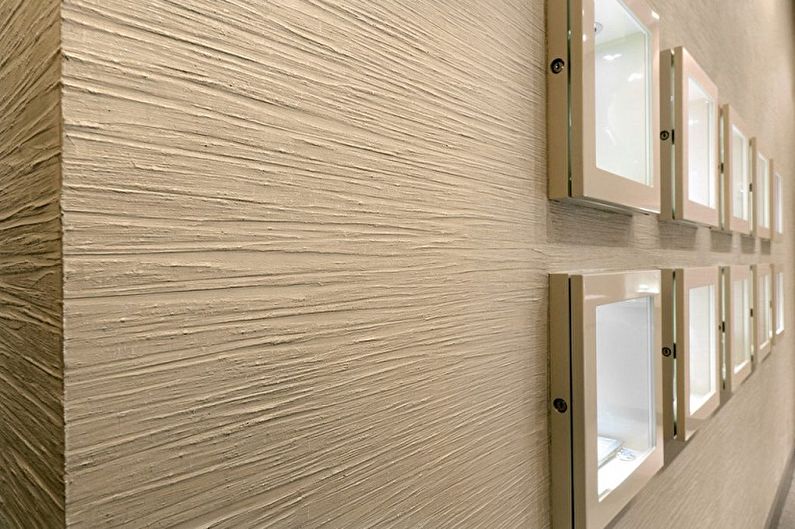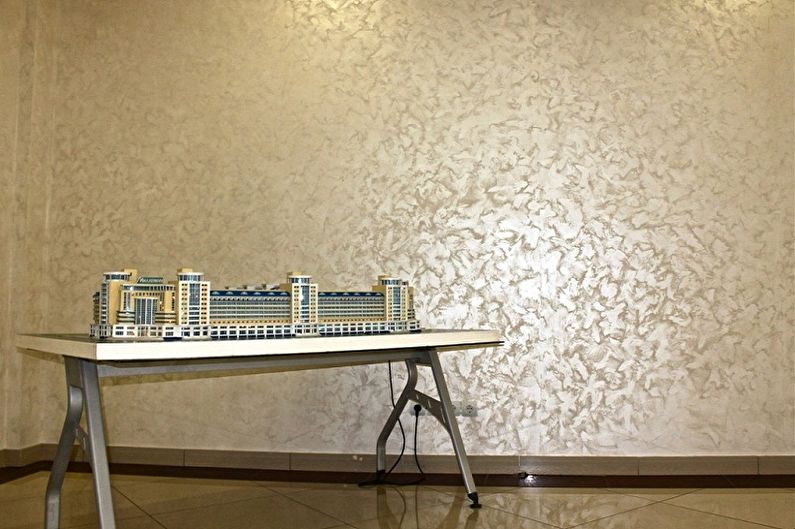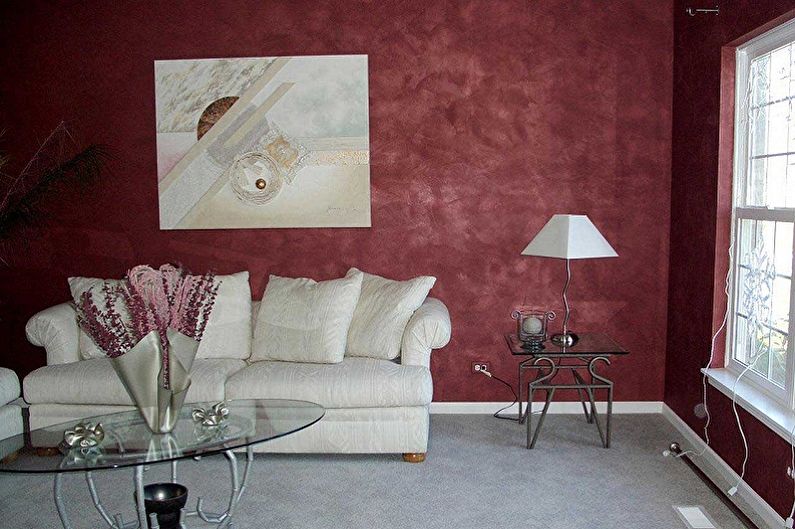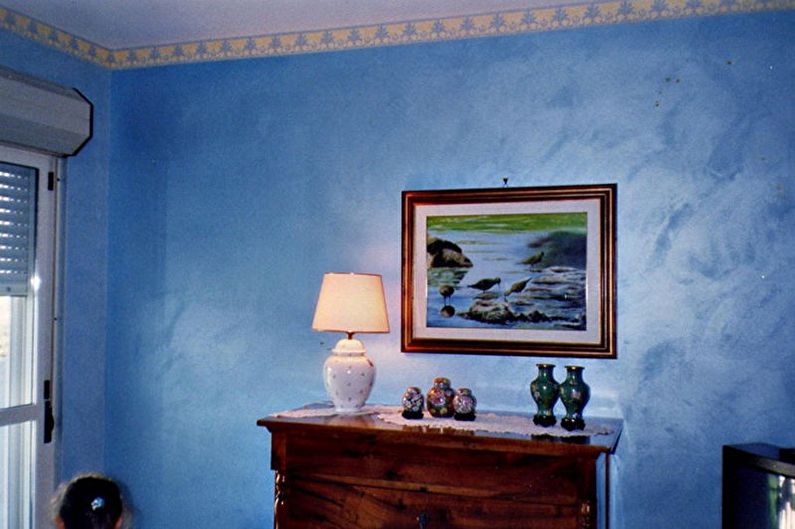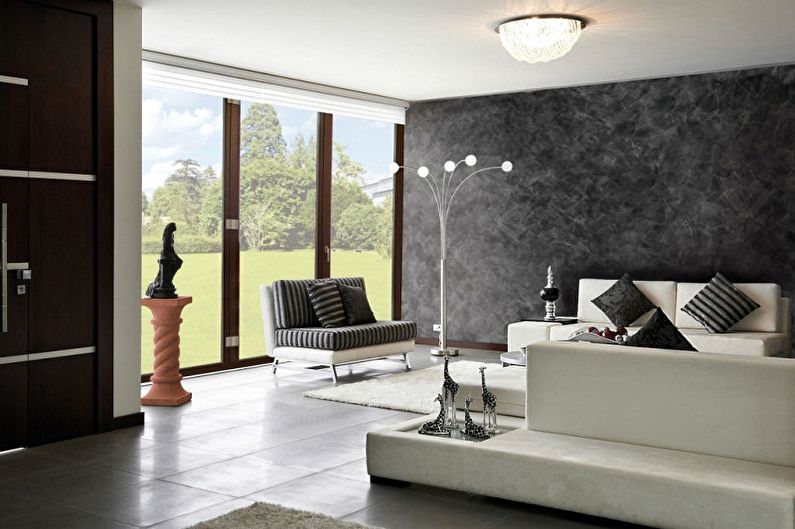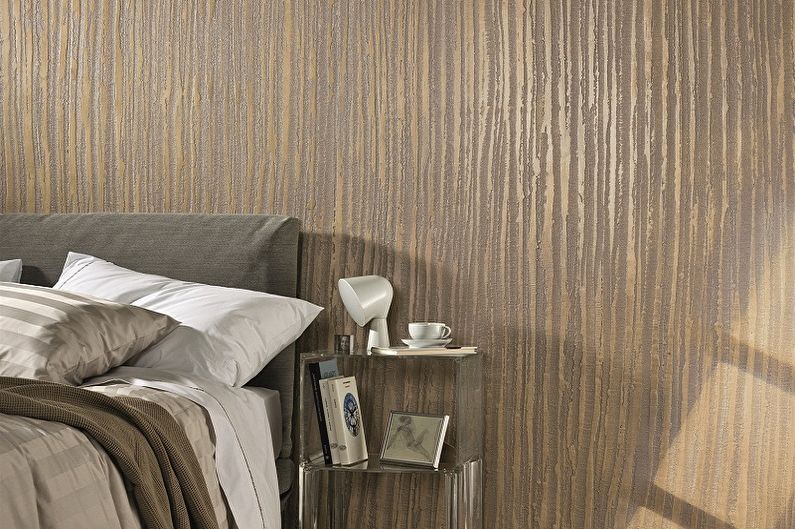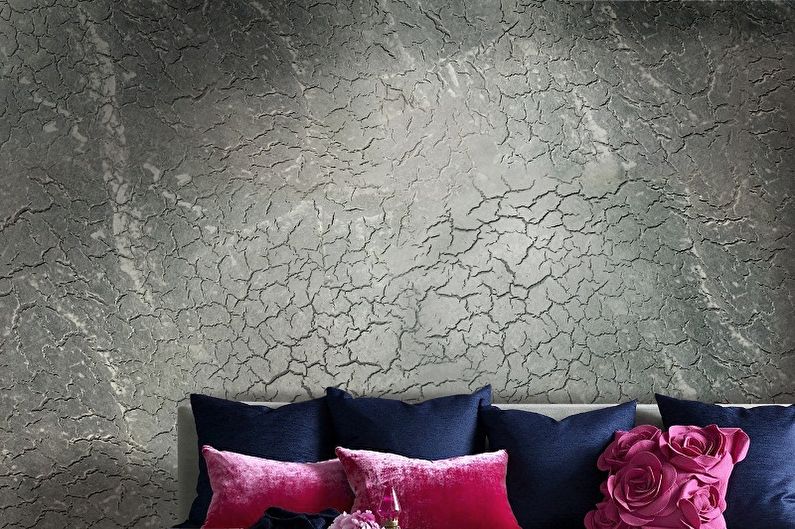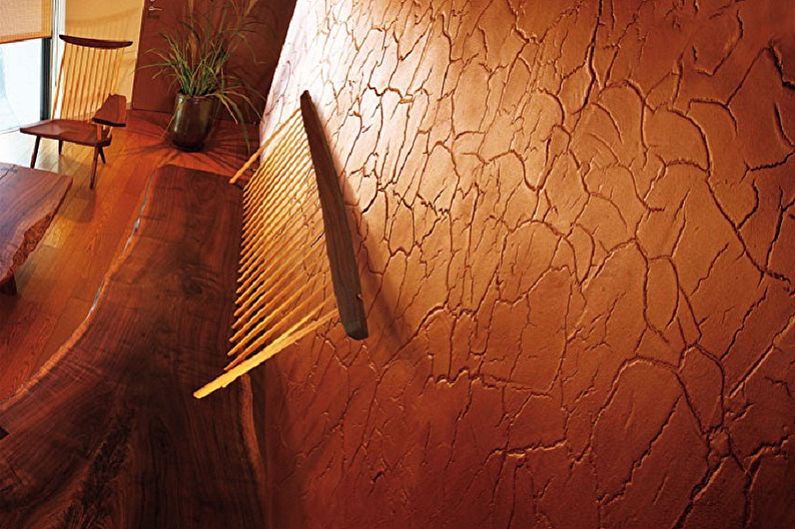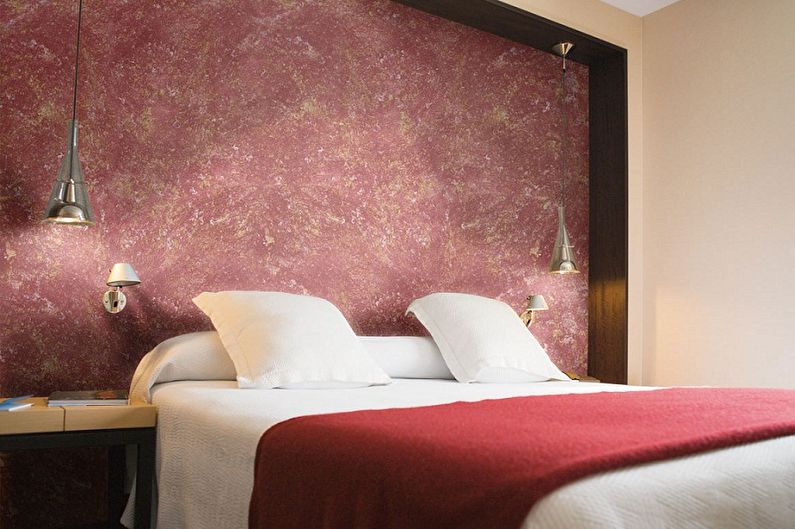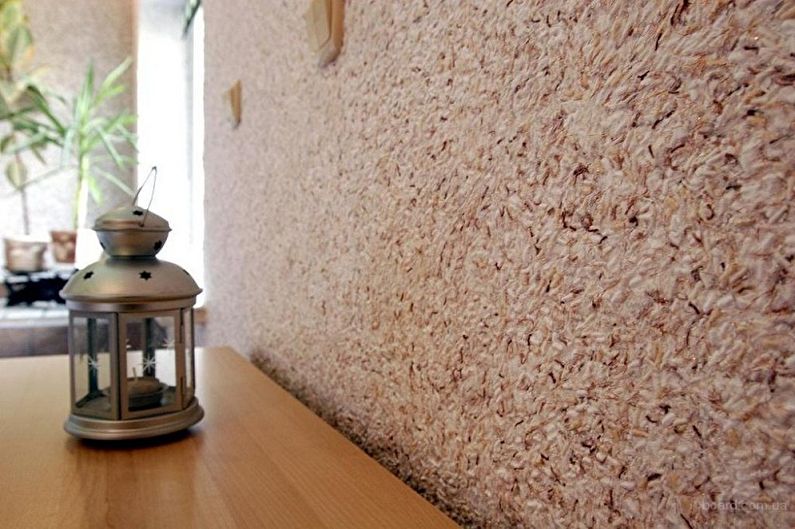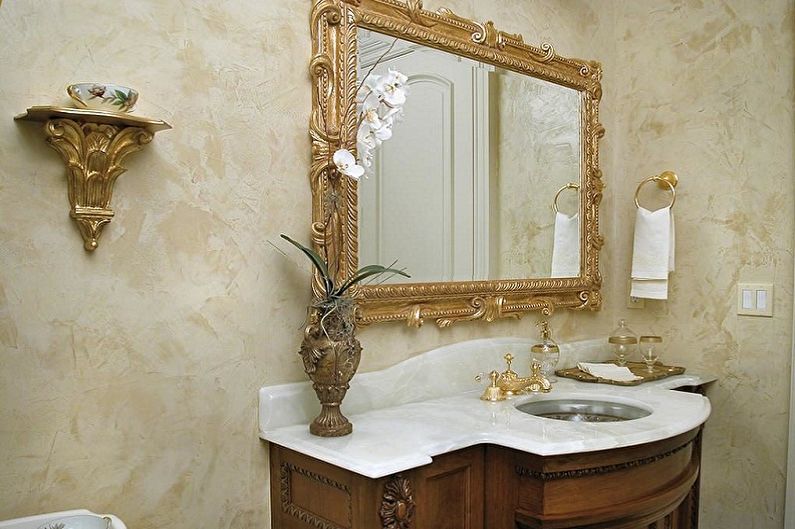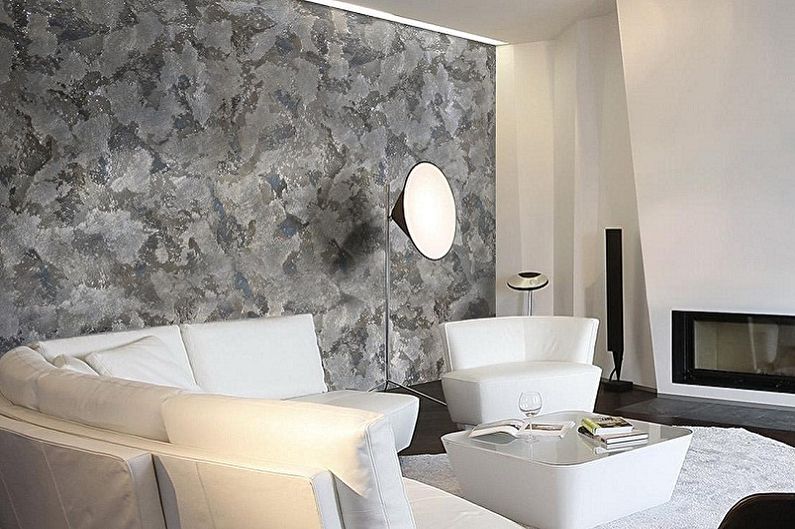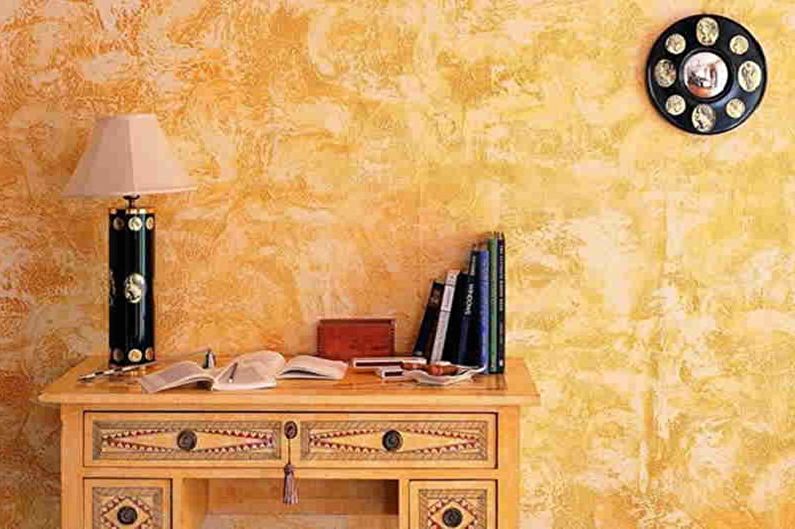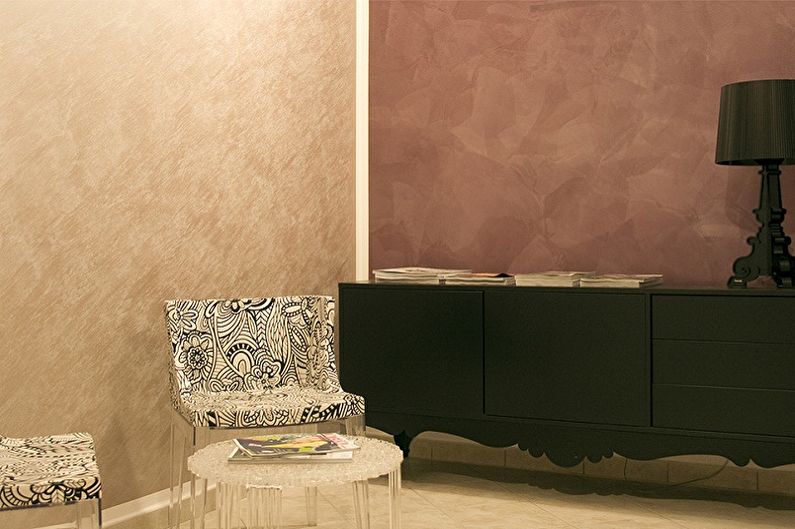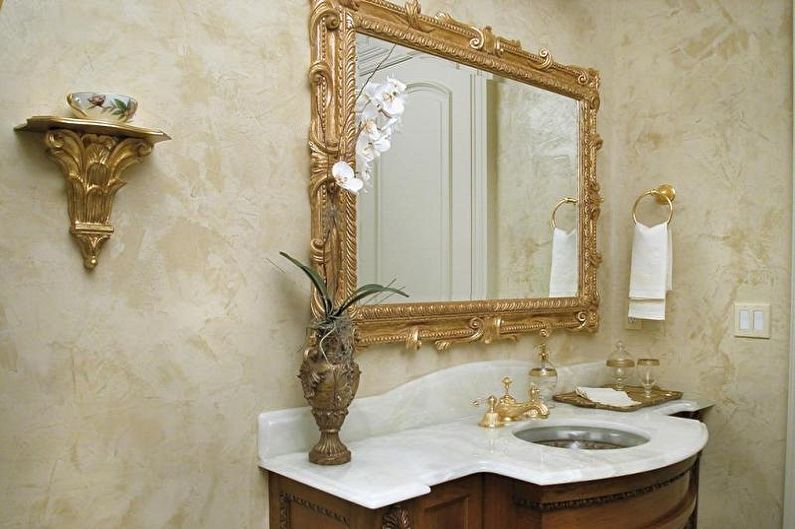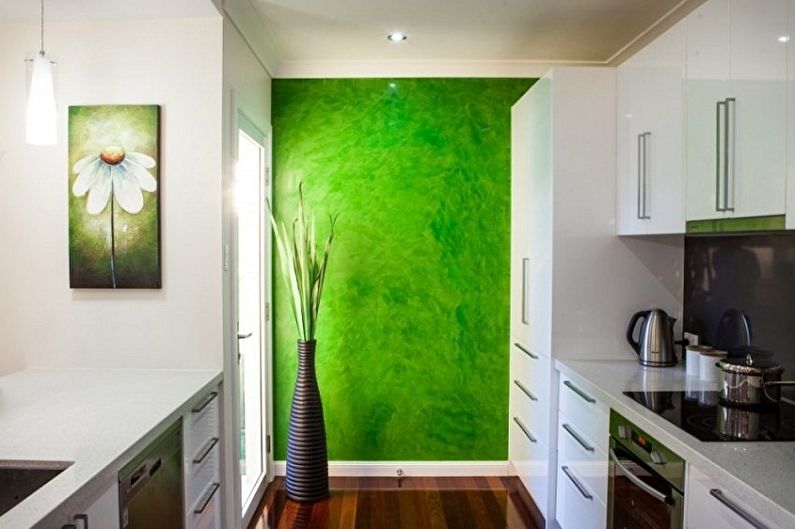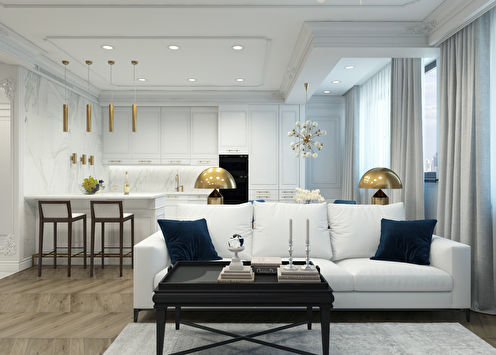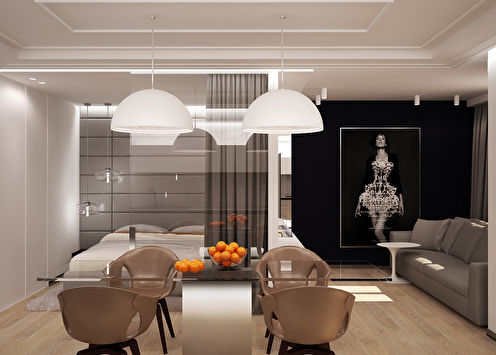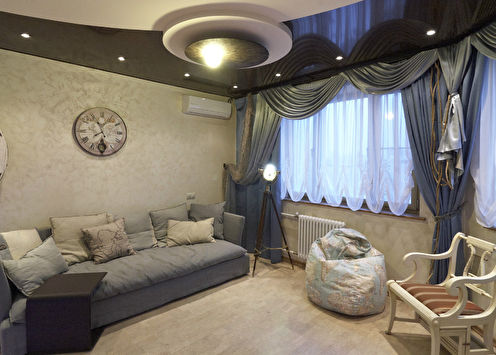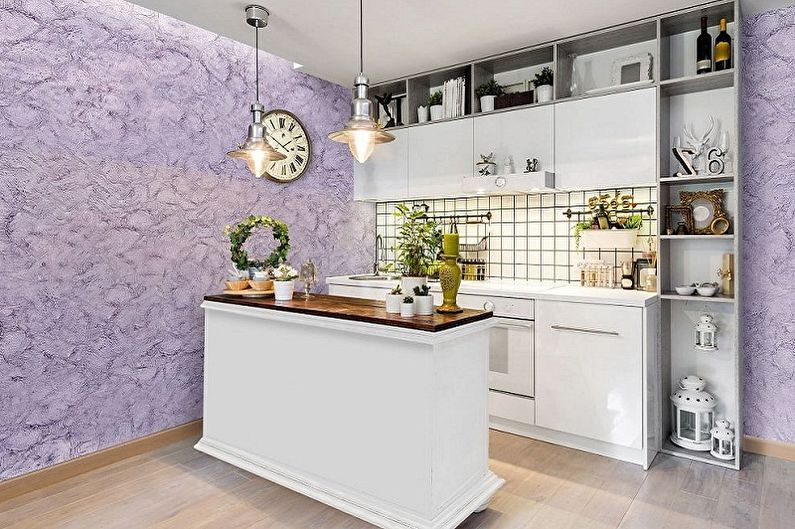
One of the new, but already quite popular options for wall decoration is decorative textured paint. Unlike its predecessors, with the help of which the walls acquired a standard smooth look, texture paint is able to create unique volumetric patterns. The peculiarity lies in the originality of the finish - because each master applies the canvas with individual touches, which are difficult to repeat. Next, we will consider what textured paints are and how to work with them.
Features of textured paint
The main feature of all textured paints that distinguishes them from ordinary paints is bulk. Reliefs of patterns allow you to create beautiful wall paintings with an individual approach to design and help hide any imperfections of interior partitions. The texture mass looks like a translucent substance and surprises with its considerable strength, preserving the surface of the walls. Textured paints are characterized by high resistance to various influences (temperature extremes, high humidity, ultraviolet), so they can be safely used in the design of internal and external cladding, which will last for many years.
The composition includes an acrylic base, which introduces a variety of additives that help in creating a relief canvas. You can easily get any desired shade by mixing the desired color. The advantage of this type of finish is ease of application. Any craftsman, even the most remote from construction work, can work with paints. Some even manage to prepare the composition on their own at home.
Another important point - texture paints are made from environmentally friendly materials, do not provoke allergic reactions, so they can be safely used in any room, including children’s.
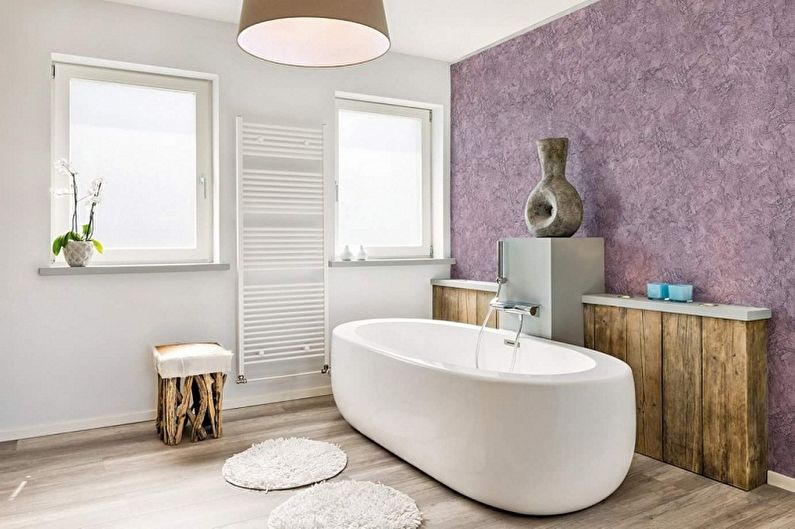
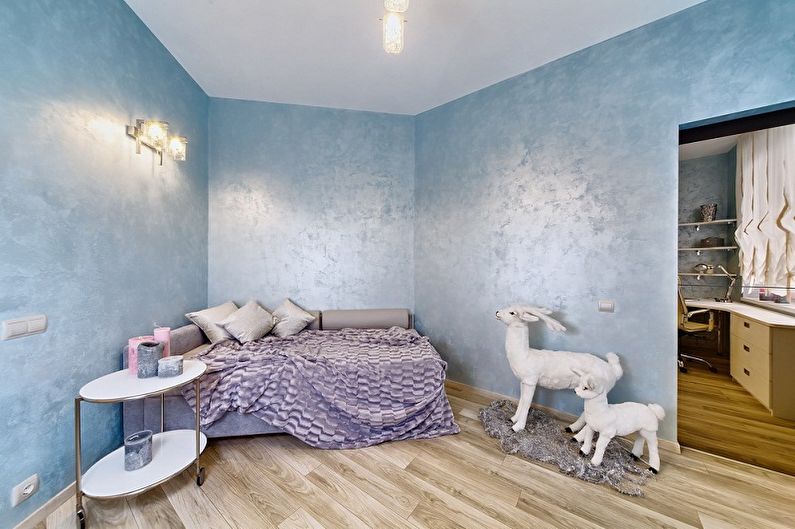
What fillers are used
Structural mixtures, as we have already said, have fillers of various types that have individual characteristics. Today, manufacturing companies offer four main varieties of fillers, namely:
- Acrylic - filler provides resistance to most external influences;
- Silicone - implies the presence of the same resin, which provide a high level of practicality;
- Mineral - the basis is cement and lime. Paints with such a composition are perfect for street work;
- Silicate - paints with such a filler are considered the most expensive material. This includes liquid glass, which forms a protective surface layer, which makes the compositions suitable for exterior decoration. Also, the textured paint may include granite chips, metal dust with reflective properties, pigments that give a special pearlescent or silk shade.
The composition can be done independently at home. In this case, the main fillers of ordinary acrylic paint will be granite chips, sawdust or quartz sand (marine and ordinary will not work). The risk of such a manufacture of texture paint is that it is difficult to predict the final result - it can ultimately differ greatly from the desired one. Therefore, if you nevertheless decided to make such a composition - start with a small amount, arrange them with the hidden part of the wall. If the appearance of the decoration will please - you can begin to manufacture a large portion.
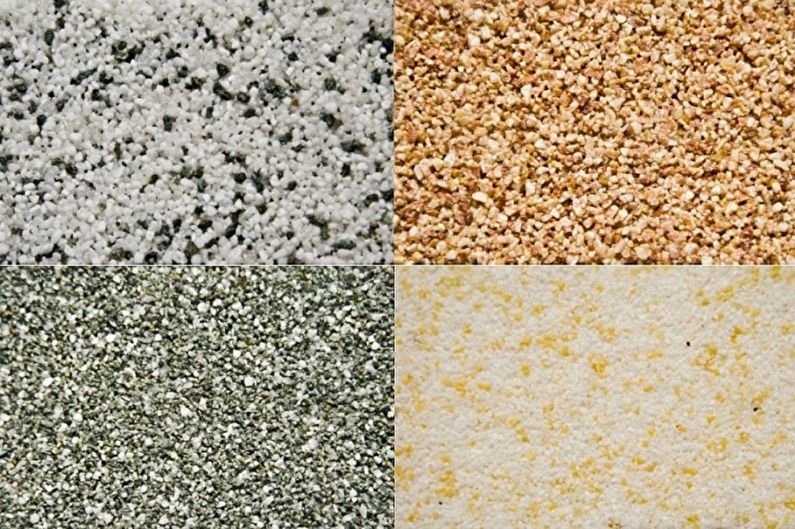
Types of textured paints
Textured paint has its own varieties, so you can choose the most suitable composition to create one or another effective pattern.The most popular are the following:
1. Atacama. The paint contains metal chips and quartz sand in equal proportions. The composition allows you to achieve the bulk of the canvas, which will be endowed with a velvety base.
2. Mizuri. The base contains modified starch, which allows you to create smooth and textured surfaces.
3. Marseille wax. Great for any room. The paint is additionally coated with wax and has protection against moisture and fumes.
4. Embossed. It has a number of fillers, so you can easily create a variety of reliefs with a smooth spatula.
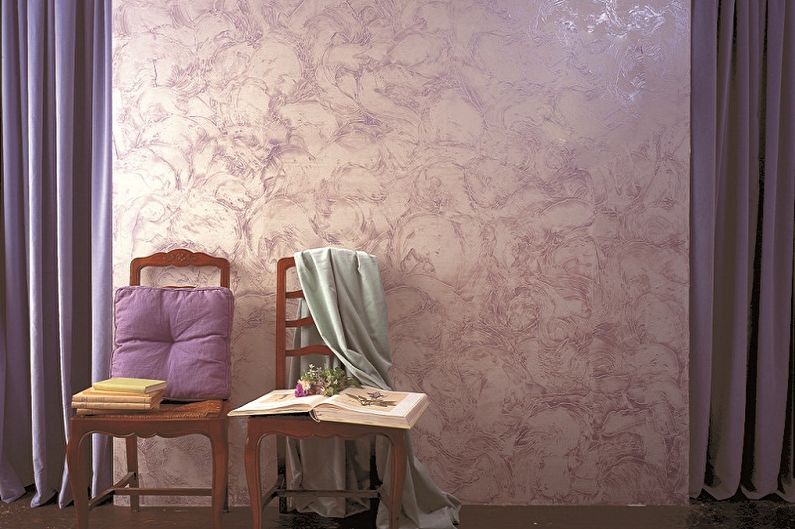
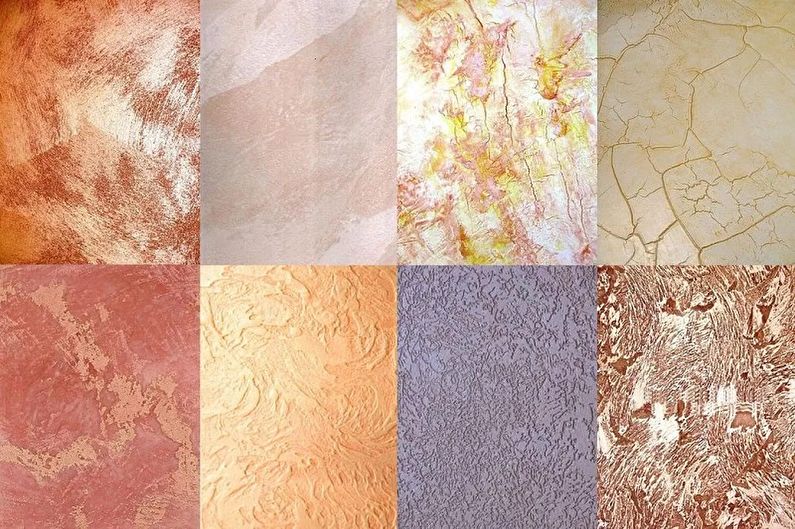
How to work with textured paint
Working with textured paint is not particularly difficult - the whole process can be divided into several stages. Before starting, you should give the paint the desired shade using special liquid concentrated dyes. Next, we prepare the tool.
The main layer of paint is applied using a spatula, and there are many options for creating a relief. A good helper in the work will be a figured roller whose surface has convex patterns imprinted on the primary layer. Also, an ordinary roller with a fur (foam) nozzle, which gives the surface roughness, is suitable.
With a stiff brush, you can apply a deep rare relief on the surface, drawing wave-like, straight lines in a strict or chaotic order. Even a simple sponge or compressed paper can be a great tool for creativity - they apply stamping movements, giving the surface a kind of ripple. If you are already armed with everything you need, we get to work.
Stage 1
The first thing to do is tidy up the walls, remove the previous coating completely. If they have significant curvature, serious damage with falling pieces - these problems need to be fixed, and small chips and scratches will be masked by a thick layer of relief paint.
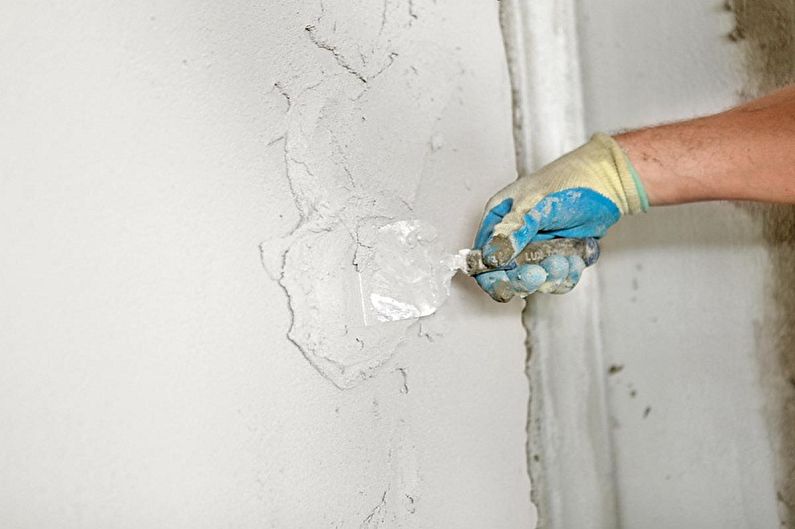
Stage 2
We apply a paint base layer to the prepared walls using a metal or wooden spatula. Its thickness should not exceed 1.5 cm. It should be noted that some compositions are not recommended to be installed at very high or low temperatures - this should be a warning to the manufacturer.
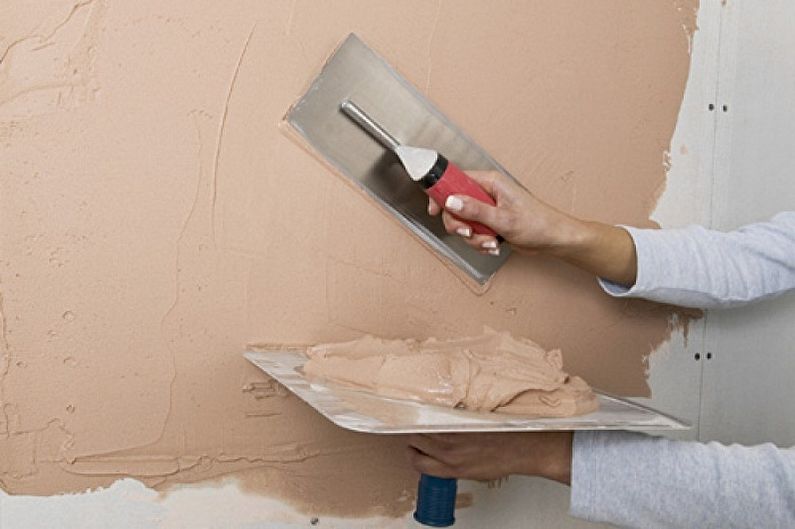
Stage 3
The most important process is the creation of relief. It should be remembered that the paint dries out within a quarter of an hour, so the work needs to be done quickly enough or with a partner (one puts the paint, and the second creates the pattern). We have already considered what tools to choose to create the desired canvas pattern. We add only that to enhance the effect of balancing the color palette, you can open the finished surface with wax or varnish, but only after 48 hours, so that the canvas is completely dry.
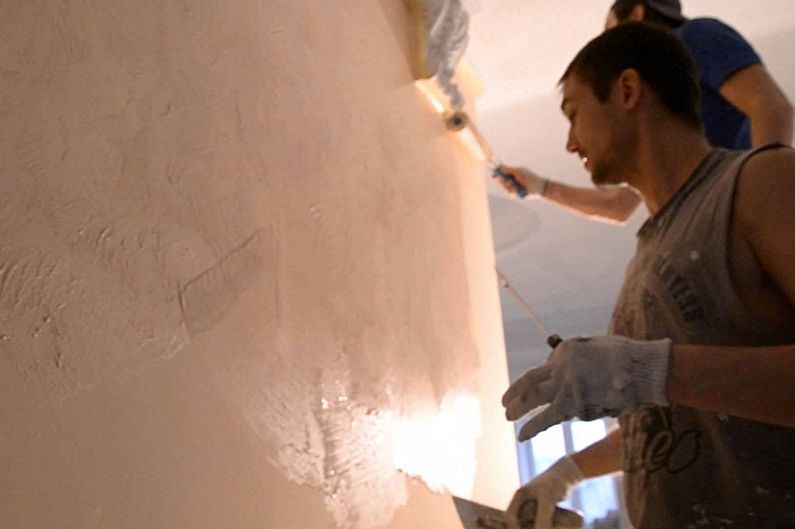
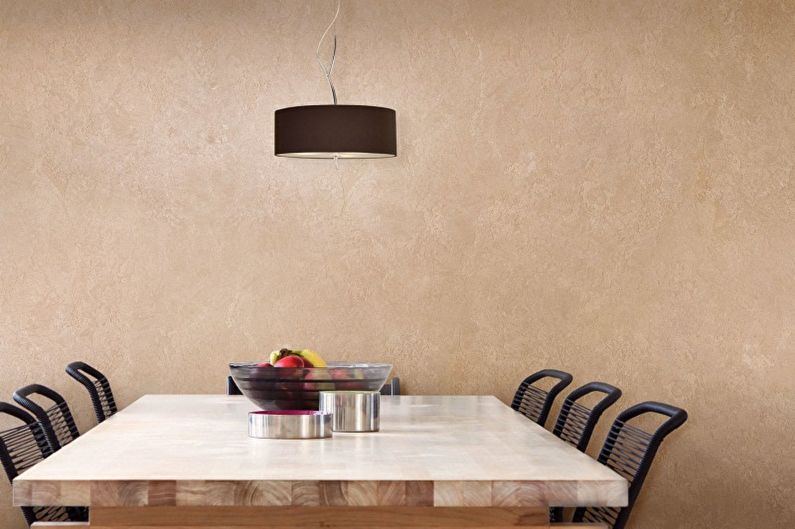
Textured wall paints - photo
In conclusion, we suggest visiting our photo gallery. Here are the best examples of design and wall decoration with textured paints. Enjoy watching!
